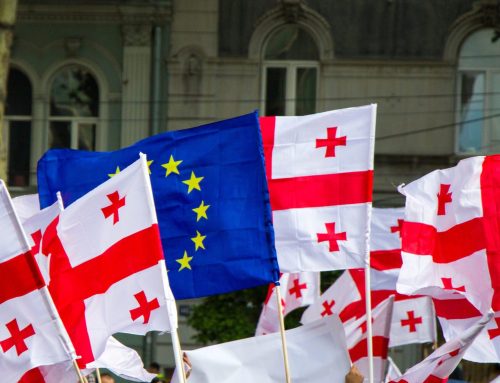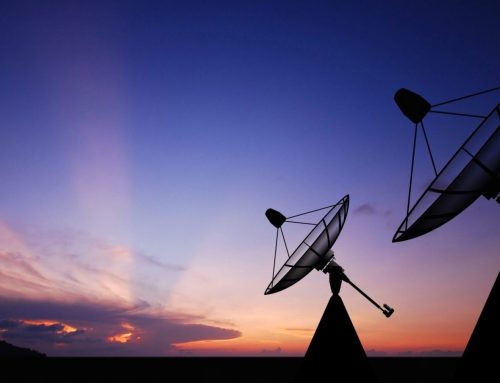Russia
Monitored Russian accounts tweeted 16,217 times last week, pulling in 189,410 retweets and 549,373 likes.
Kremlin-linked accounts last week focused much of their messaging around the EU’s dependence on Russian gas. While RT explained that “technical” challenges had led Russian energy giant Gazprom to cut gas deliveries to Europe, other accounts highlighted how a lack of Russian gas was raising energy prices, undercutting GDPs, and leading to shortages of basic goods throughout Europe. Moscow-affiliated outlets also bashed the EU’s plan to voluntarily limit gas usage by 15 percent between August 2022 and March 2023. RT en Español posted, “What comes before spring? Right, winter,” and it went on to note that the EU is “situated pretty far from [the] equator.” Other tweets underscored Hungary’s opposition to the plan, fears that gas rationing could weaken EU unity, and Twitter polls that purported to show public disapproval of the program. As usual, state media and diplomats blamed US-directed sanctions for the EU’s energy challenges, with one RT journalist claiming, “US imperialist interests hit Europe.” Moscow’s propagandists also warned that the EU’s push to replace Russian gas would lead the bloc to rely on dirtier types of fuel, like coal. They also reported that Russia was exporting record amounts of gas to China and planning to join Iran in a project that would move gas to Oman and Pakistan. Gazprom’s move to entirely cut gas to Latvia got limited attention.
Russian propagandists also continued to frame Ukraine for war crimes. After a missile killed dozens of Ukrainian prisoners of war being held in a Russian-occupied part of the Donetsk region, Russian officials argued that Ukrainian forces had intentionally killed their own captured soldiers with US-provided weapons to scare others from surrendering to Russia. The Kremlin asserted that it had “irrefutable evidence” that Ukraine had carried out the strike, and it called for an investigation into the incident. One diplomat retweeted a post that said the United State gave Ukraine targeting intelligence to kill prisoners of war belonging to the Azov Battalion. The same day as the prison camp bombing, Russia’s Embassy in the United Kingdom tweeted that “Azov militants deserve execution, but death not by firing squad but by hanging, because… they deserve a humiliating death.” Meanwhile, other diplomats warned that Ukraine could attack Europe’s largest nuclear power plant, which Russian forces have been using for cover. State media also made fun of Ukrainian President Volodymyr Zelensky for being featured in Vogue magazine, painting him as a “narcissistic actor” who forced “millions of Ukrainian civilians to die” as he posed for pictures.
Russian Foreign Minister Sergey Lavrov and US Secretary of State Antony Blinken’s first meeting since February received modest coverage. Despite Blinken saying that he pressed Lavrov on high-profile negotiations to release Paul Whelan and Brittney Griner, two US citizens imprisoned in Russia, Kremlin-linked accounts mentioned “Whelan” and “Greiner” (an incorrect spelling that is prevalent in Russian media) in fewer than a dozen tweets. Russia’s Ministry of Foreign Affairs instead insisted that the two sides “return to professional dialogue in the context of ‘quiet diplomacy.’” State media also used the meeting’s readout to spread standard propaganda against US weapons shipments.
Russian outlets also amplified the threats that China made against the United States to deter House Speaker Nancy Pelosi (D-CA) from traveling to Taiwan. RT en Español tweeted the Chinese Foreign Ministry’s line that if Pelosi visited Taiwan the United States would face “resolute countermeasures.” The outlet also quoted analysts who said that Taiwan “will have to bear the wrath of Beijing” if Pelosi stopped there. Sputnik radio host Garland Nixon took a more exaggerated angle, claiming that “White House insiders” had leaked that President Joe Biden was worried Pelosi’s visit would “trigger a nuclear exchange” and “cost billions of lives.” Garland also questioned what the United States was “doing sticking our nose in their [Taiwan’s] business” while the US is in a recession.
China
Monitored Chinese accounts tweeted 20,759 times last week, pulling in 137,764 retweets and 533,751 likes.
With House Speaker Nancy Pelosi’s (D-CA) visit to Taiwan still unconfirmed as of Sunday, Chinese diplomats and state media’s rhetoric last week around her trip aimed to dissuade her from visiting. Taiwan was mentioned every day in the Ministry of Foreign Affairs’ (MFA) press conferences last week, with the island notably being mentioned a total of 23 times in Friday’s press conference alone. On Monday, MFA spokesperson Zhao Lijian reiterated China’s broad opposition to Pelosi’s trip and warned of “serious consequences” if the trip went ahead. On Tuesday, Zhao struck a more conciliatory note by repeating the Chinese understanding of the United States’ commitment to the one China principle. On Wednesday, Beijing’s threat shifted from “serious consequences” to “resolute countermeasures.” On Thursday, Zhao once again insisted that “we Chinese mean what we say.” And on Friday, he rehashed all of China’s main irritations from Japan’s ever-closer relations with Taiwan, as well as Beijing’s firm opposition to Pelosi’s trip.
Other high-level diplomats were also firm in their opposition. The MFA’s official Twitter account warned of “resolute countermeasures” and pleaded for the United States to “hear the voices of reason.” Assistant Foreign Minister Hua Chunying spoke of “safeguarding China’s national sovereignty” and quoted Xi’s “principled position on the Taiwan question.” The Chinese ambassador to the United States referenced the WWII-era Potsdam Proclamation promising the return of Chinese territories seized by Japan during war. And the ambassador to Australia warned of “dark clouds or even violent storms across the Strait.”
Diplomats further removed from the region and nationalist state media and their employees tended to be more bellicose in their responses to the speaker’s possible visit. The consul general in Belfast tweeted that “the [People’s Liberation Army] PLA will not sit idly by” and warned Taiwan “not to play with fire.” The consul general in Karachi advertised the PLA’s most recent armed drone’s flight around the island. A CGTN presenter repeated that the Chinese military “will not sit back.” The nationalist tabloid Global Times had several incendiary takes, depicting the United States as a “paper tiger,” boasting about an “’aircraft carrier killer’ hypersonic weapon,” and suggesting that “China can push the reunification process a step further.” But the most provocative commentary on Pelosi’s planned trip came from the former Global Times editor in chief, Hu Xijin, who remains popular on social media despite no longer holding an official position. He speculated about the “possibility of a military conflict,” called Mike Pompeo “sinister” for offering to accompany Pelosi, and, after the trip was confirmed on Monday, suggested the Speaker should “pray before departure.”
The commotion around the Taiwan trip somewhat overshadowed the phone call between President Joe Biden and Chairman Xi Jinping that took place on Thursday. The vast majority of the Chinese commentary on the call simply repeated Xi’s talking points about the one-China principle and the need for both countries to work together for the common good. The MFA also pushed back against the White House’s account that Biden raised the issue of genocide and forced labor in Xinjiang, calling the claim “disinformation.”
Despite the generally positive rhetoric surrounding the call, the top performing tweets from Chinese diplomats last week denigrated the United States and its democratic allies. Zhao attacked US military interventionism and shared an image of NATO leaders photoshopped above corpses representing past US- and NATO-led operations. The now-former consul in Beirut also poked fun at US space policy. And the consul general in Belfast portrayed the EU and the United States as destructive global actors compared to China.
“Xi Jinping” and affiliated terms (“Chinese President Xi Jinping”) were the most frequently mentioned key phrases and hashtags in Chinese diplomats and state media’s tweets last week. While many of those mentions were related to current events discussed above, such as the phone conversation with Biden, others seemed more broadly patriotic, such as Xi Jinping being regularly mentioned in tweets about the anniversary of the founding of the PLA. Overall, the increase in mentions of the Chinese leader is likely to persist in coming weeks and months as the entire Chinese state apparatus primes audiences, both at home and abroad, for a tradition-breaking third term for Xi Jinping at the upcoming 20th National Congress of the Chinese Communist Party.
“Xinjiang” was the second most frequent hashtag and third most frequent key phrase in Chinese diplomats and state media’s tweets last week. As always, some accounts, like Hua Chunying and a popular CGTN presenter, focused on the region’s beautiful sights, while others, like the consul in Belfast and the cultural counsellor in Pakistan, criticized the UN and the United States for their critical positions on the China’s policies towards Uyghurs. “COVID” and “monkeypox” were also among the most mentioned terms in monitored Chinese tweets last week. “COVID” was used in a variety of contexts but most notably in tweets by the former ambassador to the African Union and the consul in Belfast, who praised China’s “miracle” handling of the pandemic. Conversely, Chinese state media attacked rich countries for mishandling monkeypox and highlighted rising cases in the United States.
The views expressed in GMF publications and commentary are the views of the author alone.







